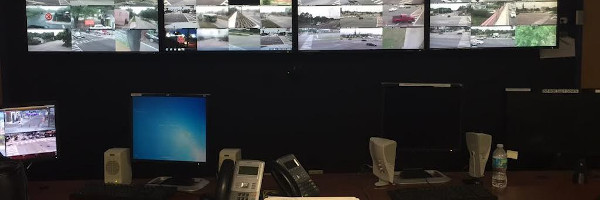Video Analytics for Orlando Public Safety
| Video Analytics for Orlando Public Safety | |
|---|---|

| |
 Orlando Public Safety | |
| Team Organizations | Harris University of Central Florida College of Engineering Amazon |
| Team Leaders | Charles Ramdatt Sheldon Drobot |
| Participating Municipalities | Orlando FL |
| Status | Ready for Public Announcement |
| Document | None |
Description
The project will create connected, city-wide mobile resources and systems to help improve the responses to a variety of challenges within the City of Orlando. Orlando is central city of 275,000 people, in an urban area of 2.4 million citizens, but with 68+ million visitors per year and the largest rental car market in the world. Thus, Orlando has some unique challenges with public safety and traffic. This project will meet the needs of several city departments and external agencies by ensuring cross-cutting and robust situational awareness for a variety of scenarios. It will allow for optimized deployments and expedited responses from police, fire fighters, emergency medical services, public works staff, transportation staff, special event managers, and external agencies which are obligated to provide mutual aid.
Challenges
Various city and external agency managers need tools to vastly improve situational awareness for several challenges in different scenarios, each of which requires quick response and seamless collaboration.
Solutions
- Quick understanding of the scale and nature of challenges will allow the deployment of the appropriate resources and allow for the understanding of the mitigating measures that are to be employed.
- Response times are critical. The project will integrate computer aided dispatch (CAD) and automated vehicle location (AVL) systems, and implement systems in dispatch and training dispatchers to reduce the ambulance response time. The system will be integrated into GIS positioning system to locate individuals in need based on location.
- Several different camera systems are currently available. However, they are not integrated and no software based analytics are currently employed to interpret the numerous feeds on an expedited and simultaneous basis.
Major Requirements
- Articulate the project vision to gain stakeholder support and buy-in from the community
- Develop and assemble project team & stakeholder team
- Review the individual and overlapping challenges faced by the team
- Inventory existing/available resources such as camera and communications systems
- Create scope and requirements, project plan
- Develop system architecture
- Create application development team, develop mobile application
- Downtown Orlando is selected as the pilot area because of the convergence of needs and the pre-existing camera networks in that area
- Run pilot to overlap with the hurricane season and the ramping up of high #s of special events in the Fall
- With lessons learned from the pilot, ensure a phased plan for enabling activity centers, major arterial roadway corridors, places of public interest, and then all neighborhoods across the city.
- Ensure a program of independent evaluation of performance
Performance Targets
| Key Performance Indicators (KPIs) | Measurement Methods |
|---|---|
|
|
Standards, Replicability, Scalability, and Sustainability
- Requires interoperable GPS, AVL and CAD interfaces.
- Establishes standardized procedures for rapid response services.
- Establishes standardized methods for AI-based warning services
- Builds upon existing standards in weather and public safety
- Standardized processes are not unique to city or region and can be replicated and scaled up in multiple cities/communities. The solution is planned to be replicated in other cities in the USA, Europe, and Africa.
- The system will have its own business model to create sustainable revenue stream.
Cybersecurity and Privacy
TBD
Impacts
- Reduction of existing ambulance response time
- Improving quality of lives
- Community acceptance to be replicated across the United States to engage the community to tie in medical resources.
Demonstration/Deployment
Real-time working application tied into city dispatch systems at city-wide scale, supporting over 50% of the city. Demonstration will include a simulated emergency event and the measurement of response time with and without the proposed solution.